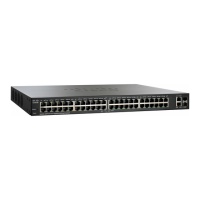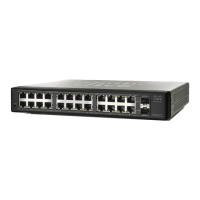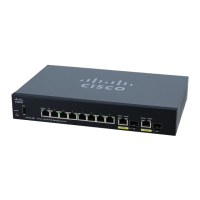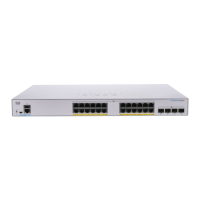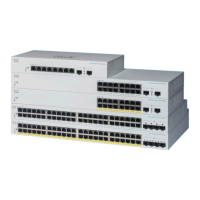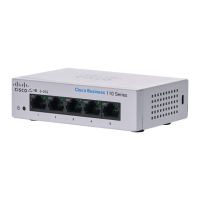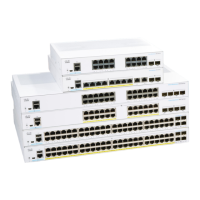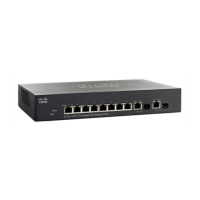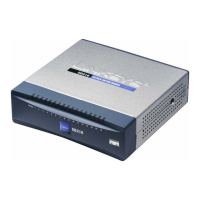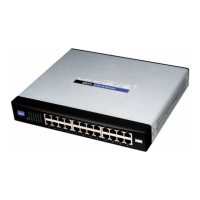Spanning Tree
Configuring STP Status and Global Settings
Cisco Small Business 200 Series Smart Switch Administration Guide 196
13
Bridge Settings:
• Priority—Sets the bridge priority value. After exchanging BPDUs, the device
with the lowest priority becomes the Root Bridge. In the case that all bridges
use the same priority, then their MAC addresses are used to determine the
Root Bridge. The bridge priority value is provided in increments of 4096. For
example, 4096, 8192, 12288, and so on.
• Hello Time—Set the interval (in seconds) that a Root Bridge waits between
configuration messages.
• Max Age—Set the interval (in seconds) that the device can wait without
receiving a configuration message, before attempting to redefine its own
configuration.
• Forward Delay—Set the interval (in seconds) that a bridge remains in a
learning state before forwarding packets. For more information, refer to
Defining Spanning Tree Interface Settings.
Designated Root:
• Bridge ID—The bridge priority concatenated with the MAC address of the
device.
• Root Bridge ID—The Root Bridge priority concatenated with the MAC
address of the Root Bridge.
• Root Port—The port that offers the lowest cost path from this bridge to the
Root Bridge. (This is significant when the bridge is not the root.)
• Root Path Cost—The cost of the path from this bridge to the root.
• Topolo gy Changes C ounts—The total number of STP topology changes
that have occurred.
• Last Topology Change—The time interval that elapsed since the last
topology change occurred. The time appears in a days/hours/minutes/
seconds format.
STEP 3 Click Apply. The STP Global settings are written to the Running Configuration file.

